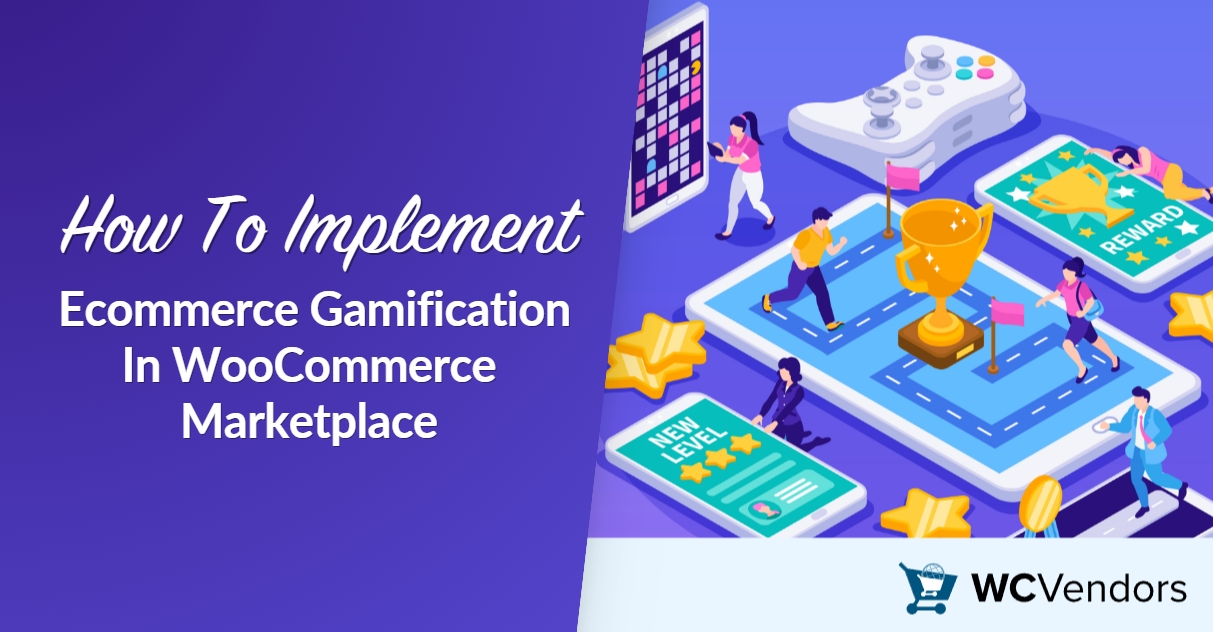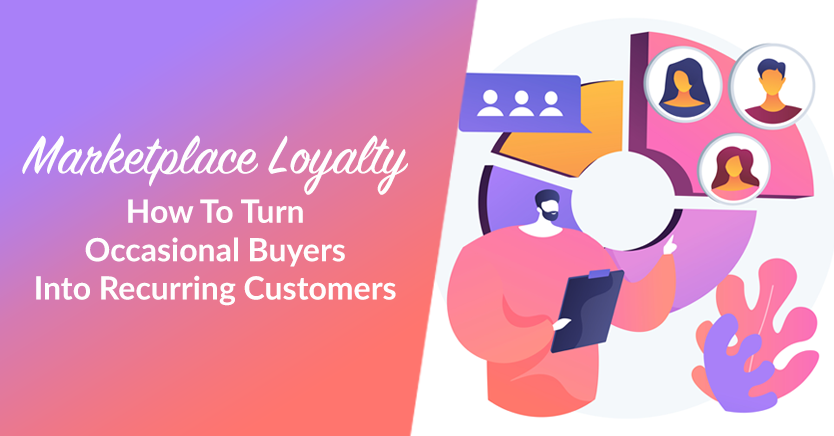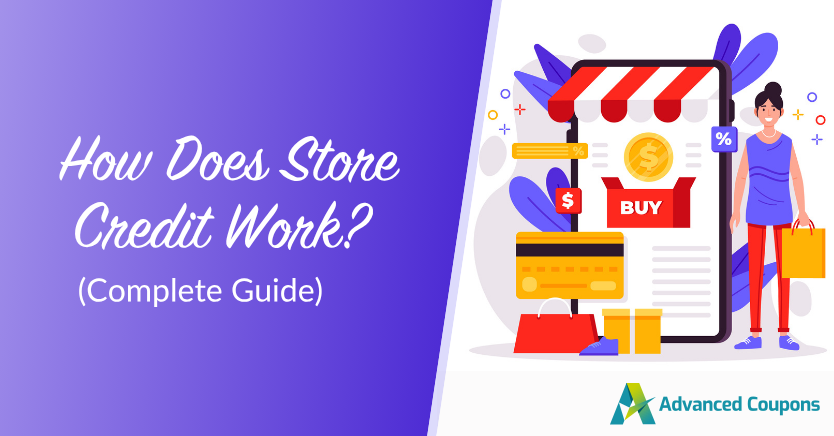
Ecommerce gamification adds fun, rewards, and friendly challenges to the usual buying process. Instead of customers just adding products to a cart, they might collect points, earn badges, or complete small goals along their shopping journey. This makes shopping more exciting and keeps people coming back to your ecommerce store.
For a multi-vendor marketplace, gamification can be even more powerful. It’s not just customers who get involved; vendors also feel motivated to compete in a healthy way. When sellers see a leaderboard or get recognized for high ratings, it can inspire them to improve their service and product quality.
A well-planned gamification system can help your ecommerce business grow by making the shopping experience enjoyable for customers while also giving vendors more reasons to participate. It turns every purchase, review, and interaction into part of a bigger and more rewarding customer journey.
What Is Ecommerce Gamification?
Ecommerce gamification is the practice of using game-like elements in online shopping to make it more fun and rewarding. It takes ideas from video games, like collecting points, earning badges, or moving up levels, and applies them to the buying process in an ecommerce store.

The idea behind ecommerce gamification is simple: people enjoy recognition and rewards. The same principle works for vendors in a multi-vendor marketplace. Sellers may feel encouraged to participate in sales challenges or aim for a higher rank on a leaderboard. This kind of motivation can lead to better products, faster service, and an overall increase in customer engagement.
Deeper insights into gamification…
According to research, 47% of companies seek gamification services to increase user engagement. In the same way, engagement is recognized as an important factor in understanding user behavior in advertising.
There is also a psychological reason why ecommerce gamification works. Humans respond to reward systems and friendly competition. Getting a small prize or acknowledgment can make people feel valued. That feeling can strengthen customer loyalty because buyers associate your ecommerce business with a positive and enjoyable shopping experience.
It is worth noting that gamification in a single-vendor store is not the same as in a multi-vendor marketplace. In a single-vendor setup, all rewards and challenges are managed by one store owner. In a multi-vendor marketplace, both the admin and the individual vendors can play a part in creating rewards and activities. This means customers can interact with many different sellers while still feeling like they are part of one shared customer journey.
How Gamification Works For WooCommerce Marketplaces
When ecommerce gamification is done well, it can change how people shop and how vendors sell. In a WooCommerce marketplace, this approach benefits both sides, customers and sellers, in ways that go beyond simple transactions.
Pros
1. Boosts repeat customer visits and purchases
When buyers know they can earn points, unlock badges, or move up a level, they have a reason to return. Instead of waiting for a big sale, they might shop more often just to reach their next reward. This kind of activity strengthens customer loyalty and improves customer retention because people enjoy being part of an ongoing customer experience.
2. Encourages healthy vendor competition
In a WC Vendors-powered marketplace, vendors can also be part of the game. A leaderboard that shows top sellers or badges for vendors with excellent ratings can inspire friendly competition. This motivates vendors to provide better service and unique products, which helps the entire ecommerce business grow.
3. Strengthens the customer-brand connection
Gamification makes shopping more personal. When customers feel recognized and rewarded, they form a stronger bond with the marketplace. This bond can lead to more positive reviews, repeat orders, and better word-of-mouth promotion.
Watch-outs
1. Can overwhelm users if too complex
If the rules of a gamification system are hard to understand, customers may lose interest. The same is true for vendors. Gamification should feel fun, not like extra work.
2. Needs consistent reward value to keep interest
Rewards have to feel worth the effort. If customers work hard to earn points but the rewards are not meaningful, they may stop participating. This can reduce customer engagement and affect long-term results.
Gamification Strategies For Your WooCommerce Marketplace
A WooCommerce marketplace has many ways to use ecommerce gamification. The best approach is to mix fun activities with rewards that matter to your customers and vendors. Here are some strategies that can make your marketplace more engaging:
1. Loyalty points systems
A loyalty points system is one of the simplest ways to add ecommerce gamification to your store. Customers earn points when they shop, leave reviews, or refer friends. These points can be exchanged for discounts, free shipping, or exclusive products.
This system works well for customer retention because it gives people a reason to return. It also improves customer engagement by rewarding actions beyond purchases, such as writing a review or sharing a product on social media. Vendors also benefit because active customers often explore more stores within the marketplace, increasing sales opportunities for everyone.
You may also read about marketplace loyalty in our blog: Marketplace Loyalty: How To Turn Occasional Buyers Into Recurring Customers.

2. Vendor and customer badges
Badges give both customers and vendors something to aim for. A customer might get a “Super Buyer” badge after placing ten orders, while a vendor could earn a “Top Seller” badge for reaching a sales milestone.
These visual rewards make people feel valued and create a sense of pride. They also encourage friendly competition between vendors, which can raise the quality of products and services across the marketplace. In turn, this supports the customer journey by improving the shopping experience.
3. Leaderboards
A leaderboard is a public list showing top performers. Leaderboards make ecommerce gamification more visible, which motivates vendors to aim for the top spots. Customers can also use leaderboards to find trusted vendors, which builds customer loyalty and makes their shopping decisions easier.
4. Time-limited challenges
Adding a time limit to a challenge makes it more exciting. For example, customers could earn double points for purchases made during a 48-hour event, or vendors could compete to sell the most products in a week.
Short-term challenges add energy to the ecommerce business and keep both vendors and customers active. This approach can lead to short bursts of higher sales while also making the buying journey feel fresh and engaging.
5. Referral and social sharing rewards
Word-of-mouth is powerful, and ecommerce gamification can make it even more effective. Offering rewards for referring friends or sharing products online gives customers an extra reason to spread the word.
When referrals are rewarded, customers are more likely to bring in new buyers. This helps vendors reach a wider audience and increases overall customer engagement in the marketplace.
💡Bonus Tip: In a multi-vendor setup, marketplace coupons can also be used as part of the reward. These coupons work across all vendor stores, making the reward feel more valuable and giving customers more freedom to choose where to spend it. Vendors benefit because these shared promotions often bring more traffic to their product pages.
Adding Gamification To WC Vendors Marketplaces
WC Vendors marketplace is a type of ecommerce store where many sellers can list and sell their products under one platform. While WC Vendors provides the framework to run a multi-vendor marketplace, adding ecommerce gamification can make it much more engaging. By connecting WC Vendors with the right plugins, store owners can add features like point systems, badges, leaderboards, and challenges that work for both customers and vendors.
your solution
Here are some compatible plugins that can bring gamification to a WC Vendors marketplace:
1. myCred
myCred is a points management system that lets you reward customers for different actions, such as making purchases, leaving reviews, or referring friends. It works with WC Vendors so both marketplace-wide and vendor-specific rewards are possible. Vendors can give points for buying certain products, while the admin can run larger events that reward customers across all stores.
2. WooCommerce PDF Vouchers
WooCommerce PDF Vouchers lets you create printable vouchers that customers can redeem for products or services. In a WC Vendors marketplace, vendors can offer their own vouchers, which customers can use both online and offline. This is a great way to bring ecommerce gamification into experiences that go beyond the digital space.
For example, you could run a seasonal challenge where customers earn a voucher after completing a set of purchases across multiple vendors. These vouchers can serve as rewards for milestones, encouraging repeat visits and stronger customer loyalty. Because the vouchers are flexible, vendors can tailor them to their own products, while the marketplace admin can design events that encourage customer engagement across the whole ecommerce business.
3. Advanced Coupons
Advanced Coupons adds flexibility to your promotions. It supports features like BOGO deals, store credit, and cart condition rules. When used in a WC Vendors marketplace, you can create marketplace coupons that apply to all vendors or limit them to certain ones. This makes it possible to combine points programs with time-limited coupons, encouraging both vendors and customers to take quick action, which increases customer engagement.
By using these tools with WC Vendors, you can turn your marketplace into a more interactive space where customers enjoy shopping and vendors stay motivated to participate.
You may also read about: How Does Store Credit Work? (Complete Guide).

Best Practices For Implementing Gamification
Adding ecommerce gamification to a WooCommerce marketplace can create exciting results, but it works best when there is a clear plan. Without proper setup, customers and vendors may lose interest over time. These best practices can help keep your gamification system effective and enjoyable for everyone.
1. Keep rules clear and easy to understand
Customers and vendors should understand how the gamification system works right away. Keep instructions short, use simple language, and make sure rewards are explained clearly on your ecommerce store.
2. Balance rewards for both customers and vendors
In a marketplace, both groups need a reason to participate. For customers, that could mean points, badges, or vouchers. For vendors, it could be higher visibility through leaderboards or featured store spots. A balanced system improves customer engagement and vendor motivation at the same time.
3. Use analytics to measure impact on engagement and sales
Gamification is most effective when it leads to real results. Tracking data helps you see if customers are returning more often, buying from multiple vendors, or redeeming rewards. This also helps in refining the customer journey so that the system supports customer retention over the long term.
4. Regularly refresh challenges to avoid boredom
Even the best gamification ideas can lose their impact if they stay the same for too long. Rotate challenges, add new rewards, or create seasonal events to keep things interesting. This keeps both vendors and customers engaged and encourages ongoing participation in your ecommerce business.
Conclusion
Ecommerce gamification is a practical way to make a WooCommerce marketplace more active. When customers feel rewarded for their actions, they are more likely to return, spend more time browsing, and recommend the store to others. Vendors also respond well to recognition and challenges, which leads to better service and a healthier marketplace overall.
In this article, we discussed what you need to know about ecommerce gamification in marketplaces:
- What is ecommerce gamification
- How gamification works
- Gamification strategies
- Gamification in WC Vendors marketplaces
- Best practices
It is easy to get carried away with fancy ideas, but customers remember simple systems they can join without confusion. Whether it is points, badges, vouchers, or marketplace coupons, the goal should always be to make the customer journey enjoyable while supporting long-term customer retention.
Looking ahead, I believe ecommerce gamification will become even more creative as more tools and new plugins will become more available online. The marketplaces that stand out will be the ones that keep finding ways to engage customers in fresh and memorable ways, and that is the kind of approach that keeps both buyers and vendors coming back.
Frequently Asked Questions
Why do online stores use e-commerce gamification?
Stores use it to make customers want to come back again. When shopping feels fun and rewarding, people stay longer, explore more, and feel happy. This builds customer loyalty and boosts sales for the ecommerce business.
Can e-commerce gamification hurt engagement?
It can backfire if it feels too forced or complicated. People may ignore it if it seems like a chore. The key is to keep it simple and meaningful so it supports customer retention, not pushes customers away.
Do I need technical skills to use e-commerce gamification?
No. Most gamification plugins are built to work with WooCommerce and WC Vendors using simple setup steps. This makes it easy to make your marketplace more interactive, even without coding skills.
How often should gamification challenges be updated?
It helps to refresh challenges or rewards every few weeks or each season. Fresh challenges keep people curious, maintain customer engagement, and make the shopping experience feel new again.
